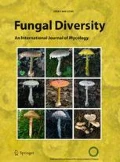Fungi represent one of the most diverse groups of organisms on the planet, with an essential role in ecosystem processes and functioning. The numbers of fungi have always been an intriguing topic with several review papers being written on the subject. Perhaps the starting point was that of paper of D.L. Hawksworth in 1991 in which he estimated that there were roughly 1.5 million species. In the last ten years, new DNA sequencing technologies have revolutionized studies of fungal taxonomy and diversity, leading to changes in the estimates of fungal species numbers ranging from 2.2 to 3.8 based on host association and 11.7 to 13.2 million species using high-throughput sequencing. However, only around 150,000 fungal species have been described to date, and it is believed that these organisms encompass a much higher diversity. Given the essential importance of fungi for ecosystem functioning, it is necessary to investigate fungal diversity using the most diverse methods and empirical demonstrations of the world fungal diversity and to address their roles in the different ecosystems.
This issue deals with the topic of fungal numbers with eight papers dealing with this aspect. Calabon et al. address the numbers of freshwater fungi. They list 3870 freshwater species known from freshwater habitats and as research is being carried out in different countries more and more taxa are being discovered. Senanayake et al. estimate the species number for sexual ascomycetes based on five different approaches, viz. numbers of described fungi, fungus: substrate ratio, ecological distribution, meta-DNA barcoding or culture-independent studies and previous estimates of species in Ascomycota. He et al. discuss the species diversity of Basidiomycota from five groups with different lifestyles or habitats: saprobic in grass/forest litter, wood-decaying, yeast-like, ectomycorrhizal, and plant parasitic. Case studies of Agaricus, Cantharellus, Ganoderma, Gyroporus, Russula, Tricholoma, and groups of lichenicolous yeast-like fungi, rust fungi, and smut fungi are used to determine trends in discovery of biodiversity. Phukhamsakda et al. examine 12 ascomycete genera as case studies to establish trends in fungal species descriptions. They compare the number of species epithets in each genus with the number of ITS (barcode) sequences deposited in GenBank and UNITE. They also hypothesize whether there might be more species in these genera and suggest hosts and habitats that should be investigated for novel species discovery. Bhunjun et al. examine 16 genera from the top 40 most speciose genera as listed in Species Fungorum as case studies to examine the diversity of taxa in each genus. They hypothesize whether there might be more species in these genera and discuss why these genera have some of the largest number of species. Wijayawardene et al. discuss the current knowledge on asexual taxa, with diversity estimates, and potential obstacles discussed on (1) speciose genera; (2) pleomorphic genera; (3) cryptic species; (4) well-studied but insufficiently resolved taxa, (5) less studied life modes, and (6) species from biodiversity-rich areas. Boekhout and co-authors discuss trends in yeast diversity discovery and finally, Baldrian et al. discuss the aspect of high throughput screening in helping to estimate fungal numbers.
It is clear that the authors are presently not near to knowing exactly how many fungi there are. Despite the various opinion papers written on fungal numbers there is much more research that needs to be carried out in establishing an accurate estimation. The authors of this special issue had intended to derive a more accurate estimate of fungal numbers as a result of the papers in this special issue. However, on reviewing the papers it would be premature to provide further estimates until research has been carried out on the various aspects that would provide better answers as to fungus/host relationships.
Author information
Authors and Affiliations
Corresponding author
Rights and permissions
About this article
Cite this article
Hyde, K.D. The numbers of fungi. Fungal Diversity 114, 1 (2022). https://doi.org/10.1007/s13225-022-00507-y
Published:
Issue Date:
DOI: https://doi.org/10.1007/s13225-022-00507-y

